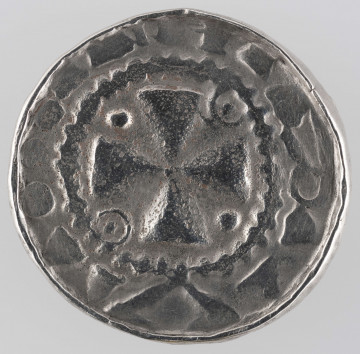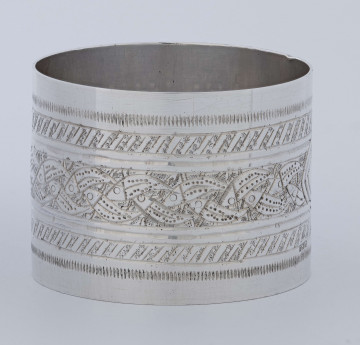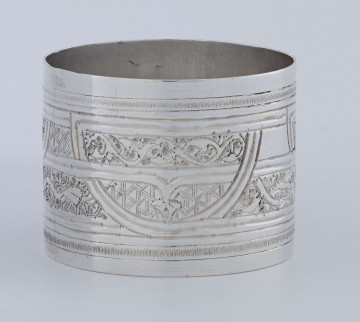
cross denarius
1075 — 1100
National Museum in Lublin
Part of the collection: Money on Polish territory in the Middle Ages
Until the last quarter of the 11th century foreign money clearly dominated over low-value domestic coins in the Polish lands. Initially these were Islamic Arab dirhams, replaced from the mid-10th century by West European denars. The most numerous group among them were cross denars, so called because of the image of a cross on the reverse. Crosses were produced in millions of pieces in many Saxon mints, using rich silver deposits in the Harz Mountains, from where they were brought to our lands from the end of the 10th to the third quarter of the 11th century. The purpose of these coins was the trade with Slavic countries. Therefore, the percentage of discovered specimens is grouped mainly in the Polish lands (75 per cent) and in Polabia (22 per cent). The export character of these coins is connected to the lack of content, which would communicate to the subjects the ideas related to the nature of the power exercised by the issuer. The place was taken by universal Christian symbolism. Thus, on the obverses of the crosses we can see images of a temple, a chapel, an alpha and omega, a pearl cross, a simple cross, a pastoral, a head and a hand, according to which their types were distinguished and arranged chronologically. The inscriptions on the denarii, which originally consisted of several words, were later reduced to individual letters, forming, together with circles and wedges, an imitation of a legend. A characteristic feature of crosses is their high edge, sometimes reaching up to 3 mm. It is still an unsolved technological puzzle. The edge protected against blurring of images, breaking and intentional cutting of the edge. For the Saxon denars were made of a highly-proven silver alloy, and they gained the status of good money among the population. As such they were imitated in Poland in the last quarter of the 11th century and at the beginning of the 12th century in magnate and princely mints. The silver needed for their production was obtained from melting down coins in circulation. However, they were poorer in bullion than their Saxon prototypes.
The discussed coin is an example of a denarius with a simple cross struck in Saxony and can be dated to the 3rd quarter of the 11th century. Its value was great enough to cover the cost of feeding an adult person for several days.
Tomasz Markiewicz
Author / creator
Dimensions
cały obiekt:
Object type
numismatic
Technique
stamp minting
Material
silver
Creation time / dating
Creation / finding place
Owner
The National Museum in Lublin
Identification number
Location / status

1075 — 1100
National Museum in Lublin

1920-1950
National Museum in Lublin

1920-1950
National Museum in Lublin
DISCOVER this TOPIC
National Museum in Szczecin
DISCOVER this PATH
Educational path